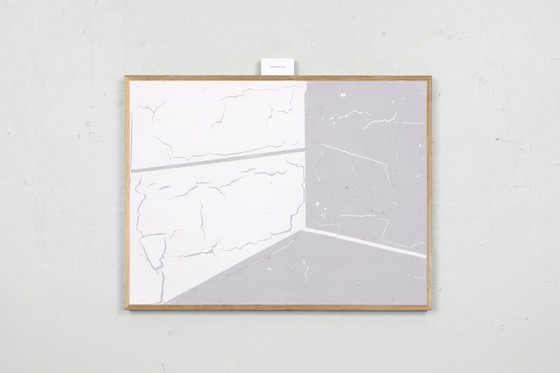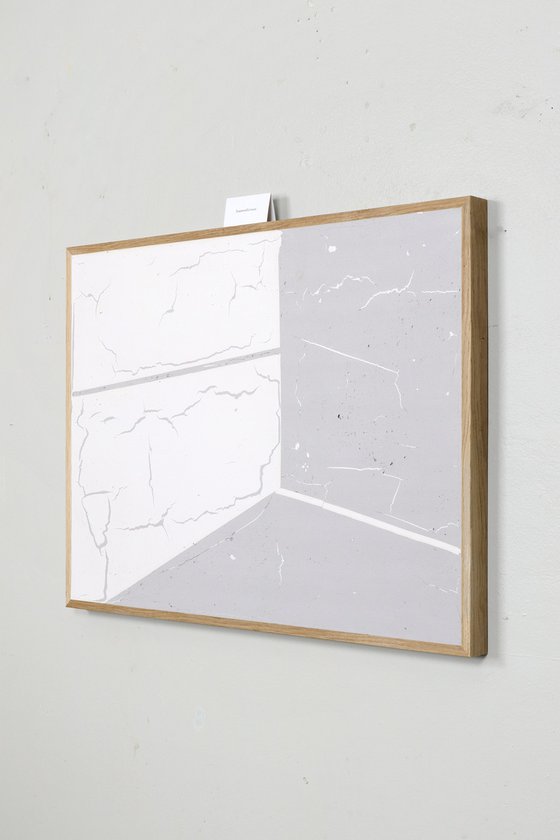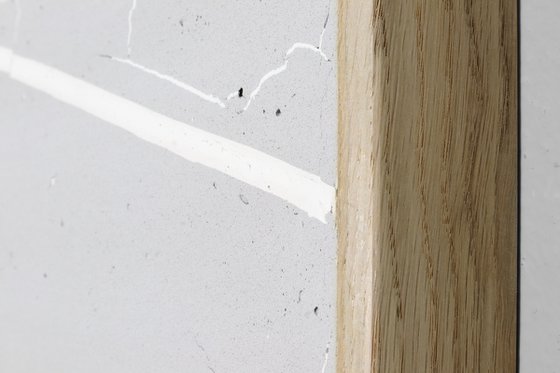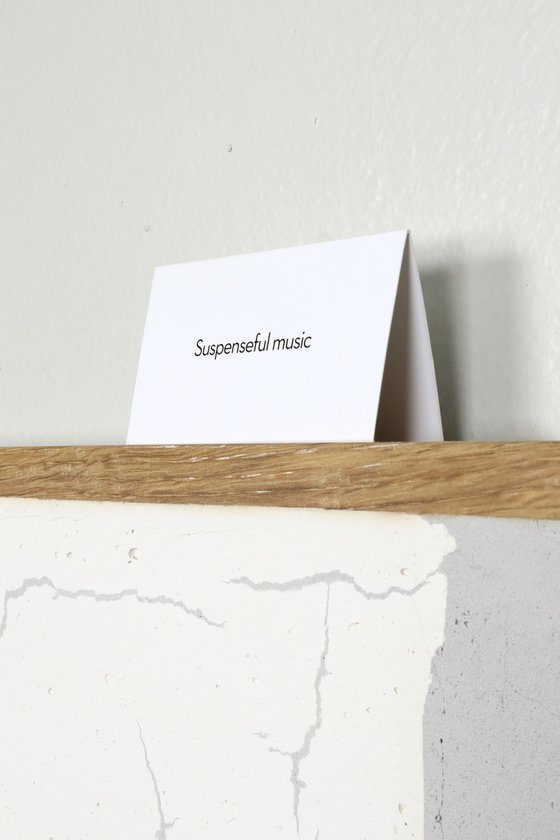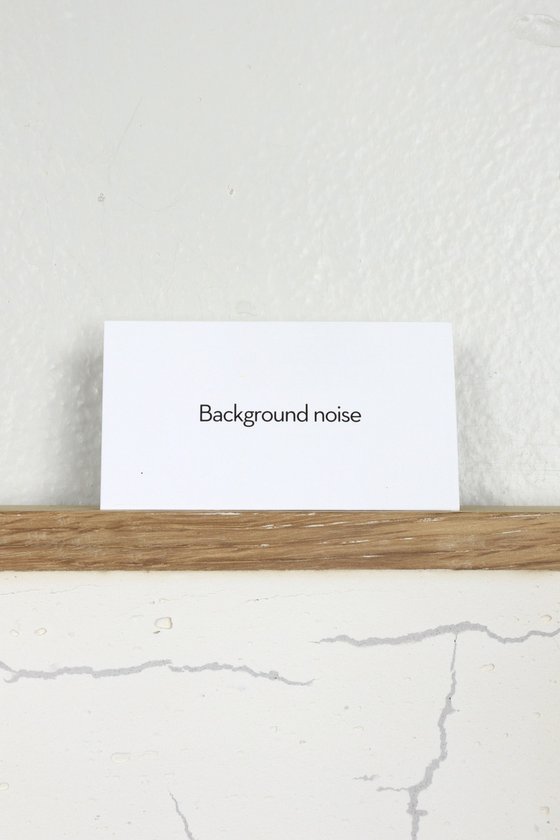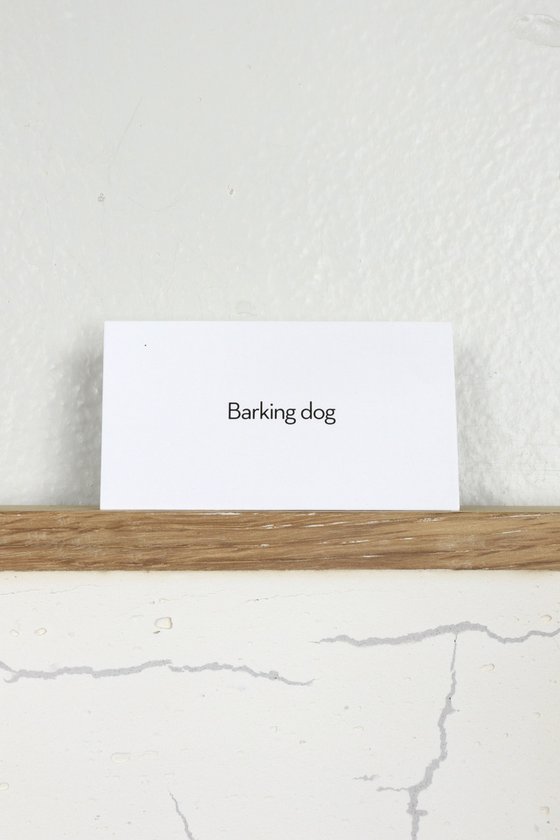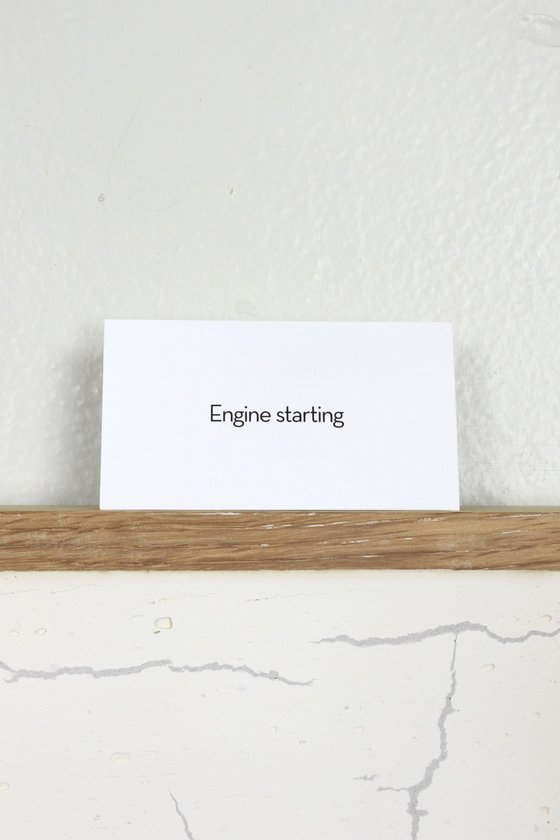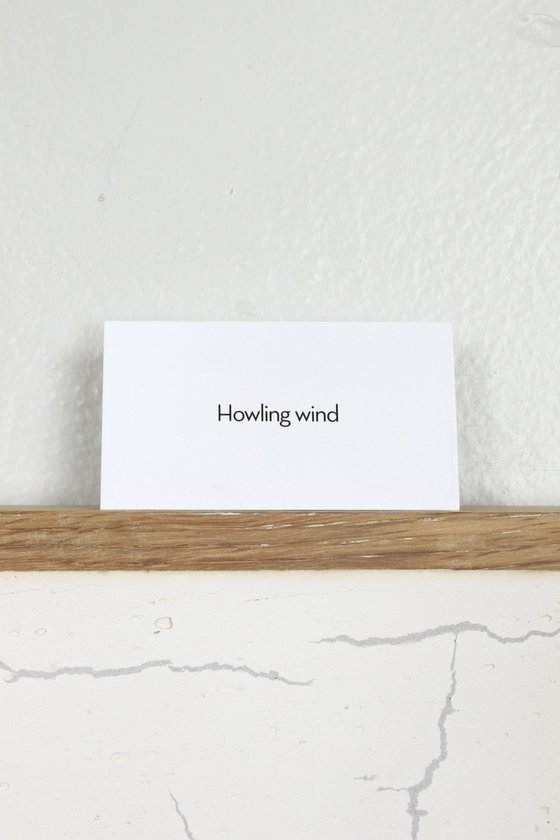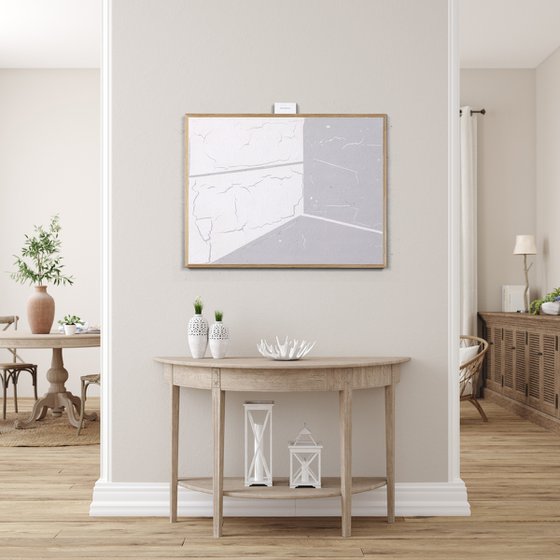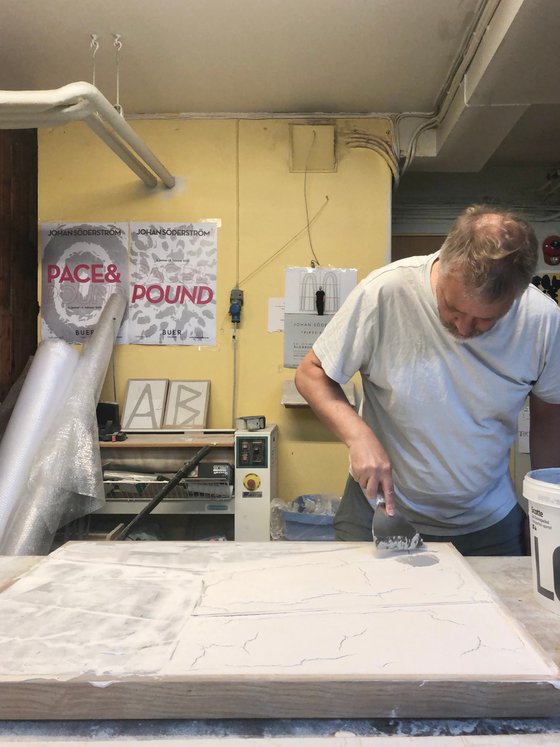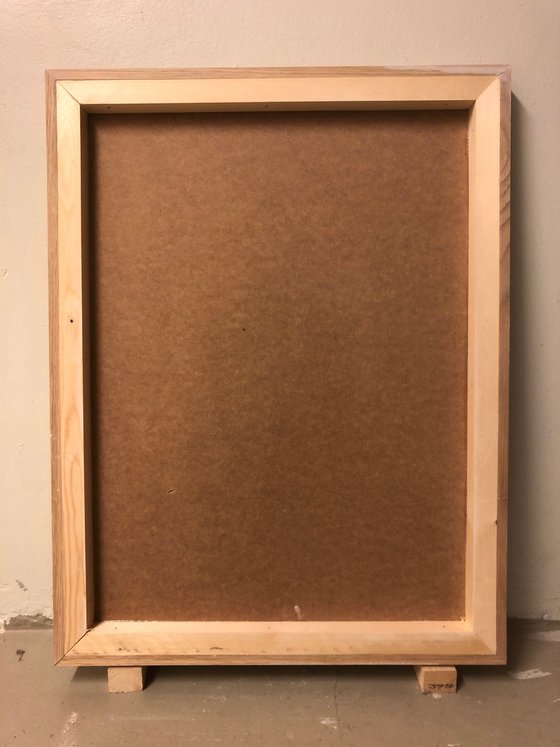- By medium
- By subject
- By budget
- Sales
- Gift cards
- Discover all art
- Artists
- Editors’ picks
- Ideas
Original artwork description:
84x64 cm | Filler, oak panel, six folded cards
This work features six folded cards with short descriptions of sounds. When exhibited, the cards can be shifted by gallery staff so the work can be experienced differently by visitors at separate times.
It was inspired by watching movies with subtitles for the hearing impaired. The fact that written language can function as a substitute for audial or visual input intrigued me. Of course, it can. How would we otherwise enjoy literature? But the reason for this is that sound and vision are perceived in the language register. Not only when watching television but seeing and hearing in general. Perception requires interpretation and is a semantic act. So adding another layer of language doesn't change the experience fundamentally.
Still, some levels of experience escape codification and can't be transferred into language. Perhaps we experience part of reality from outside the subjective position and instead from the place of the physical body. Not separated from the world but united and within the realm of matter. We can describe this experience as being outside the picture. The pictorial field (the illusion of depth being a semantic construction) always has an exterior, something obscured. Perception depends on the border of vision, but the frame itself is never visible.
There is something uncanny with a parallel line of information, not part of the image but at the same time influencing it, like a hidden demand that overrides the experience. I have chosen the sounds written on the cards and perhaps the image depicting a street corner to hint at a "noir" expression.
Materials used:
Filler (coarse and fine) in oak frame
Tags:
#abstract #painting #minimalism #filler #oak frame#428 Obstructed View (2022) Painting
by Johan Söderström
1 Artist Reviews
£1,287.87
- Painting on Panel / Board / MDF
- One of a kind artwork
- Size: 84 x 64 x 5cm (framed)
- Framed and ready to hang
- Signed on the back
- Style: Geometric
- Subject: Abstract and non-figurative
Loading
Original artwork description
84x64 cm | Filler, oak panel, six folded cards
This work features six folded cards with short descriptions of sounds. When exhibited, the cards can be shifted by gallery staff so the work can be experienced differently by visitors at separate times.
It was inspired by watching movies with subtitles for the hearing impaired. The fact that written language can function as a substitute for audial or visual input intrigued me. Of course, it can. How would we otherwise enjoy literature? But the reason for this is that sound and vision are perceived in the language register. Not only when watching television but seeing and hearing in general. Perception requires interpretation and is a semantic act. So adding another layer of language doesn't change the experience fundamentally.
Still, some levels of experience escape codification and can't be transferred into language. Perhaps we experience part of reality from outside the subjective position and instead from the place of the physical body. Not separated from the world but united and within the realm of matter. We can describe this experience as being outside the picture. The pictorial field (the illusion of depth being a semantic construction) always has an exterior, something obscured. Perception depends on the border of vision, but the frame itself is never visible.
There is something uncanny with a parallel line of information, not part of the image but at the same time influencing it, like a hidden demand that overrides the experience. I have chosen the sounds written on the cards and perhaps the image depicting a street corner to hint at a "noir" expression.
Materials used:
Filler (coarse and fine) in oak frame
Tags:
#abstract #painting #minimalism #filler #oak frame14 day money back guaranteeLearn more
